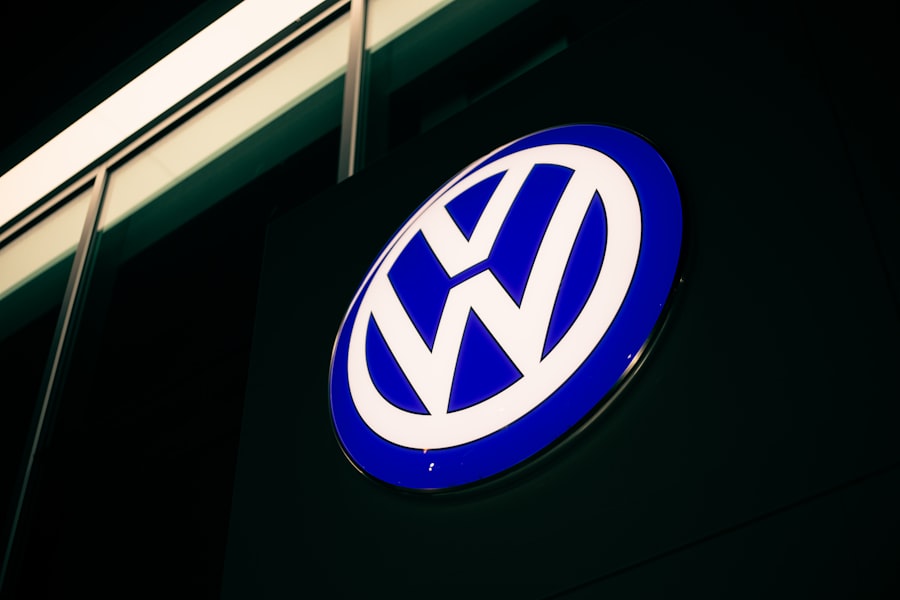The automotive industry has experienced a remarkable resurgence in recent years, characterized by a significant surge in auto sales. This rebound is not merely a fleeting trend; it reflects a complex interplay of economic factors, consumer behavior, and evolving market dynamics. As the world gradually emerged from the constraints imposed by the COVID-19 pandemic, the automotive sector found itself at a pivotal juncture.
The surge in auto sales has not only revitalized dealerships and manufacturers but has also had far-reaching implications for the broader economy. The renewed interest in vehicle purchases signals a shift in consumer priorities and preferences, as individuals seek mobility solutions that align with their changing lifestyles. This surge is particularly noteworthy given the challenges faced by the industry in recent years, including supply chain disruptions, semiconductor shortages, and fluctuating consumer demand.
Despite these hurdles, the auto sales market has demonstrated resilience, adapting to new realities and capitalizing on emerging opportunities. The current landscape is marked by a diverse array of vehicles catering to various consumer needs, from electric vehicles (EVs) to SUVs and trucks. Understanding the factors driving this surge is essential for stakeholders across the automotive ecosystem, including manufacturers, dealerships, and consumers themselves.
Key Takeaways
- Auto sales have experienced a significant surge, marking a strong market rebound.
- Increased consumer confidence is a key driver behind the rising auto sales.
- Certain popular car models are leading the surge in demand.
- Auto dealerships face challenges in meeting the heightened consumer demand.
- Strategic approaches are essential to sustain the growth in auto sales moving forward.
Factors Contributing to the Market Rebound
Several key factors have converged to facilitate the rebound in auto sales. One of the most significant contributors is the pent-up demand resulting from the pandemic. During lockdowns and restrictions, many consumers postponed their vehicle purchases, leading to a backlog of demand that has since been unleashed.
As restrictions eased and economic activity resumed, consumers were eager to make up for lost time, resulting in a surge of interest in new vehicles. This phenomenon was particularly pronounced among first-time buyers and those looking to upgrade their existing vehicles. In addition to pent-up demand, favorable financing conditions have played a crucial role in driving auto sales.
Historically low interest rates have made it more affordable for consumers to finance their vehicle purchases. Lenders have also become more willing to extend credit, further incentivizing buyers to enter the market. The combination of attractive financing options and a desire for personal mobility has created a perfect storm for auto sales, propelling them to levels not seen in years.
Furthermore, government incentives aimed at promoting electric vehicle adoption have also contributed to the surge, as consumers are increasingly drawn to environmentally friendly options.
Impact of Consumer Confidence on Auto Sales

Consumer confidence is a critical determinant of auto sales, as it directly influences purchasing behavior. When consumers feel optimistic about their financial situation and the overall economy, they are more likely to make significant purchases, such as vehicles. Recent surveys indicate that consumer confidence has rebounded significantly since the height of the pandemic, with many individuals expressing a willingness to invest in durable goods like automobiles.
This renewed confidence is bolstered by improving employment rates and rising wages, which have instilled a sense of financial security among consumers. Moreover, the shift in consumer attitudes towards mobility has also impacted auto sales. As remote work became more prevalent during the pandemic, many individuals reassessed their transportation needs.
For some, this meant investing in a reliable vehicle that could accommodate new commuting patterns or leisure activities. The desire for personal space and safety during travel has led many consumers to prioritize vehicle ownership over public transportation options. This shift in mindset has further fueled demand for automobiles, as consumers seek reliable means of transportation that align with their evolving lifestyles.
Popular Car Models Driving the Surge
| Car Model | Units Sold (2023) | Market Share (%) | Average Price | Fuel Efficiency (MPG) |
|---|---|---|---|---|
| Toyota Camry | 350,000 | 12.5 | 25,000 | 32 |
| Honda CR-V | 300,000 | 10.7 | 28,000 | 30 |
| Ford F-150 | 400,000 | 14.3 | 35,000 | 20 |
| Tesla Model 3 | 250,000 | 8.9 | 40,000 | 120 (MPGe) |
| Chevrolet Silverado | 280,000 | 10.0 | 33,000 | 22 |
The current surge in auto sales is not uniform across all vehicle types; certain models have emerged as frontrunners in capturing consumer interest. SUVs and crossovers continue to dominate the market, appealing to buyers with their versatility, spaciousness, and perceived safety benefits. Models such as the Toyota RAV4 and Honda CR-V have consistently ranked among the best-selling vehicles in recent years, reflecting a broader trend towards larger vehicles that can accommodate families and outdoor activities.
In addition to traditional combustion engine vehicles, electric vehicles (EVs) have gained significant traction in the market. The growing awareness of environmental issues and government incentives aimed at promoting EV adoption have led consumers to explore electric options more seriously. Models like the Tesla Model 3 and Ford Mustang Mach-E have garnered attention for their performance, technology features, and sustainability credentials.
As automakers invest heavily in EV technology and infrastructure, the availability of diverse electric models is expected to further drive sales in this segment.
Challenges Faced by Auto Dealerships in Meeting Demand
While the surge in auto sales presents numerous opportunities for dealerships, it also brings forth a set of challenges that must be navigated carefully. One of the most pressing issues is inventory management. The automotive supply chain has been significantly disrupted due to semiconductor shortages and logistical challenges stemming from the pandemic.
As a result, many dealerships have faced difficulties in maintaining adequate inventory levels to meet rising consumer demand. This scarcity of vehicles can lead to longer wait times for customers and potential lost sales opportunities. Additionally, dealerships must adapt their sales strategies to accommodate changing consumer preferences.
With an increasing number of buyers conducting research online before visiting dealerships, it is essential for dealerships to enhance their digital presence and streamline the purchasing process. This shift towards online shopping necessitates investments in technology and training for sales staff to ensure they can effectively engage with customers both online and in-person. Balancing traditional sales methods with modern digital strategies will be crucial for dealerships aiming to capitalize on the current surge while addressing evolving consumer expectations.
Future Outlook for Auto Sales in the Market

Looking ahead, the future outlook for auto sales appears promising but is not without its uncertainties. Analysts predict that while the current surge may stabilize as supply chain issues are resolved and inventory levels normalize, underlying demand for vehicles will remain strong. Factors such as population growth, urbanization, and changing mobility preferences are expected to sustain interest in vehicle ownership over the long term.
Additionally, as more consumers transition towards electric vehicles, automakers will likely continue to innovate and expand their EV offerings. However, potential challenges loom on the horizon that could impact future sales trends. Economic fluctuations, inflationary pressures, and changes in consumer sentiment could all influence purchasing behavior in unpredictable ways.
Furthermore, as governments around the world implement stricter emissions regulations and promote sustainable transportation solutions, automakers will need to adapt their strategies accordingly. The ability to navigate these challenges while capitalizing on emerging opportunities will be critical for stakeholders within the automotive industry.
Strategies for Sustaining the Surge in Auto Sales
To sustain the momentum of rising auto sales, dealerships and manufacturers must adopt proactive strategies that address both current market conditions and future trends. One effective approach is enhancing customer engagement through personalized marketing efforts. By leveraging data analytics and customer insights, dealerships can tailor their messaging and promotions to resonate with specific buyer segments.
This targeted approach can help build brand loyalty and encourage repeat purchases. Moreover, investing in technology will be paramount for dealerships looking to streamline operations and improve customer experiences. Implementing advanced inventory management systems can help dealerships optimize stock levels based on real-time demand data.
Additionally, enhancing online sales platforms can facilitate seamless transactions for consumers who prefer digital shopping experiences. By embracing innovation and prioritizing customer-centric strategies, dealerships can position themselves for sustained success in an evolving automotive landscape.
The Role of Auto Sales in the Market Rebound
The surge in auto sales represents a vital component of the broader economic recovery narrative following the pandemic’s disruptions. As consumers regain confidence and prioritize mobility solutions that align with their lifestyles, the automotive industry stands poised for continued growth. While challenges remain on various fronts—from supply chain issues to shifting consumer preferences—the resilience demonstrated by dealerships and manufacturers underscores the sector’s adaptability.
As stakeholders navigate this dynamic landscape, understanding the interplay between consumer behavior, market trends, and technological advancements will be essential for sustaining momentum in auto sales. The automotive industry not only plays a crucial role in individual mobility but also serves as a barometer for economic health overall. By fostering innovation and prioritizing customer engagement, stakeholders can ensure that auto sales remain a driving force behind economic recovery and growth in the years ahead.




